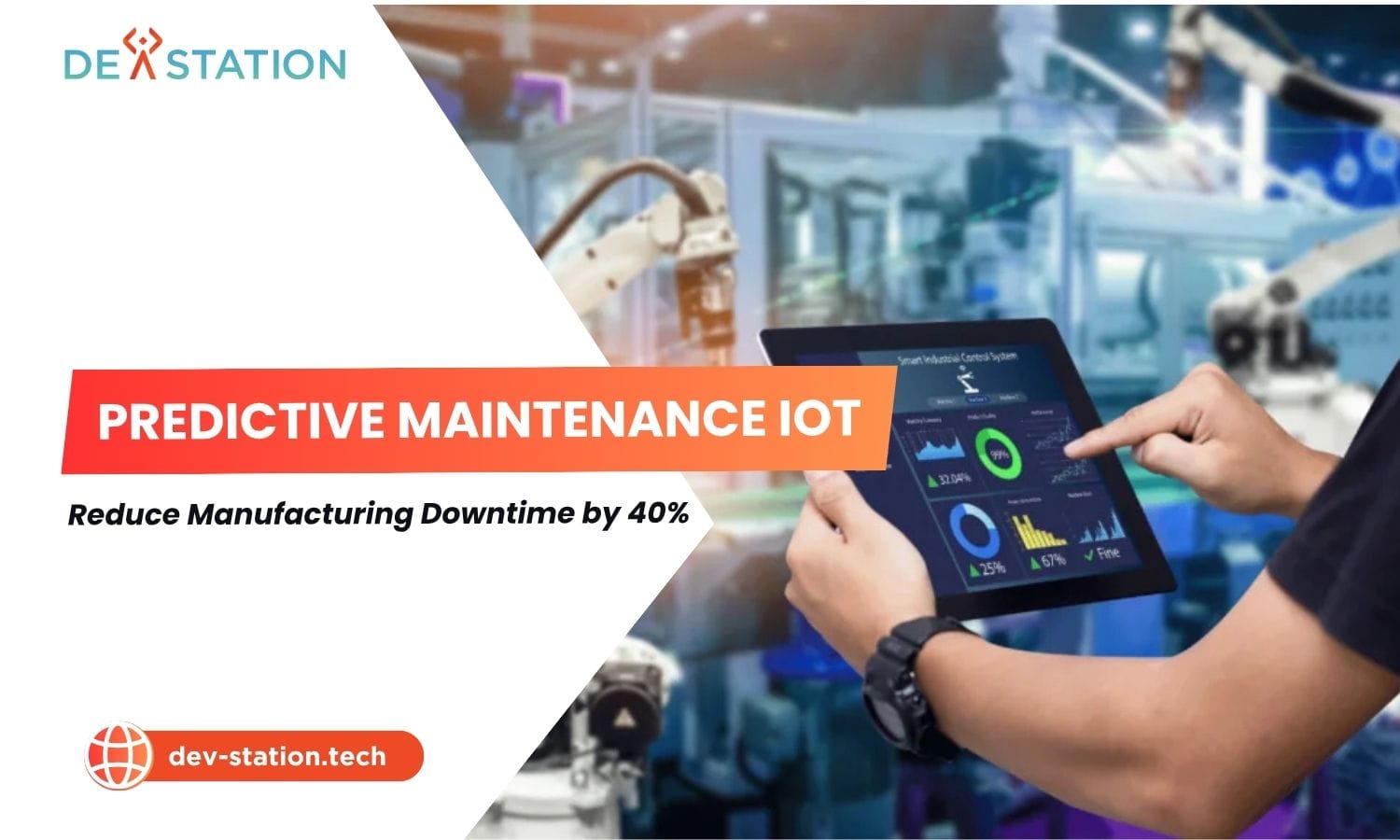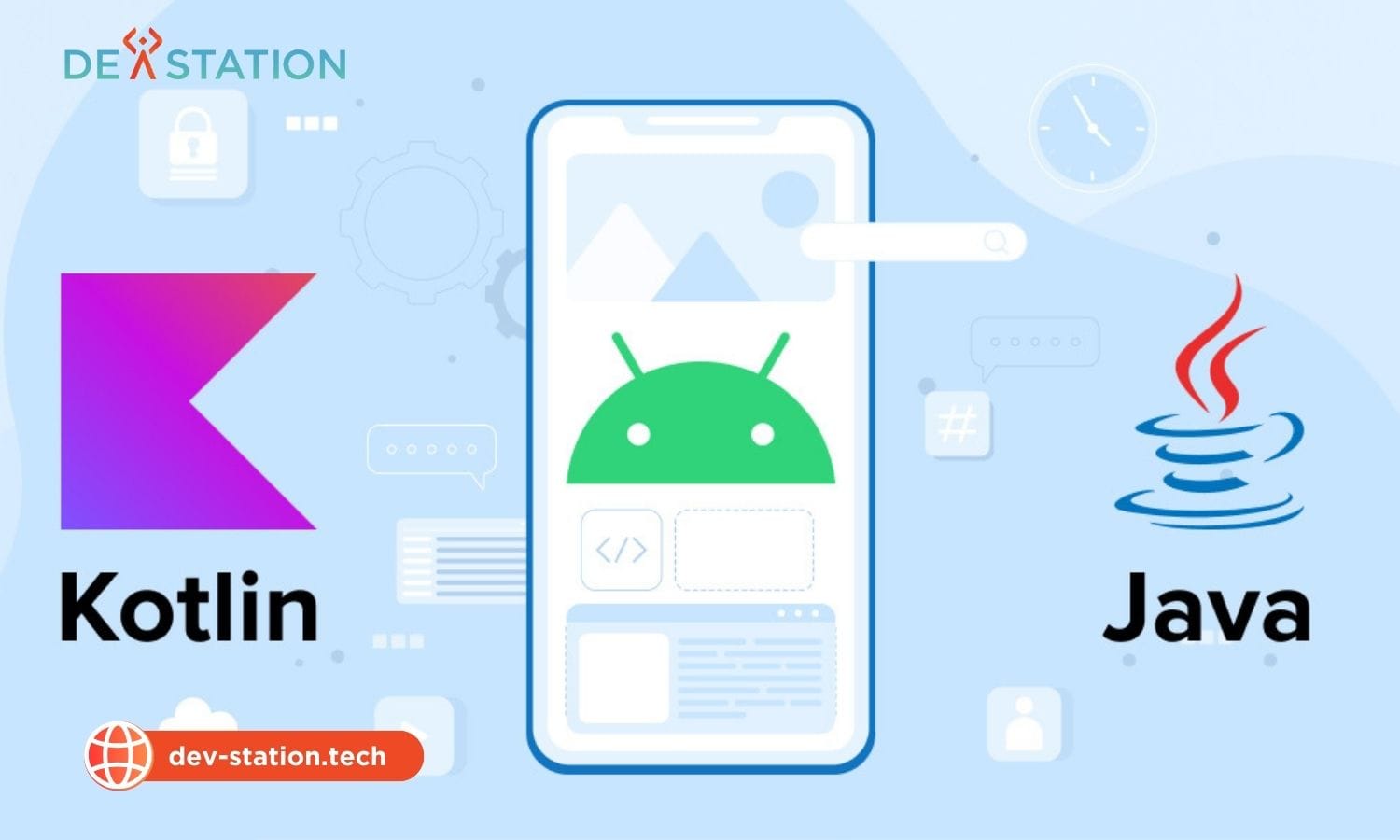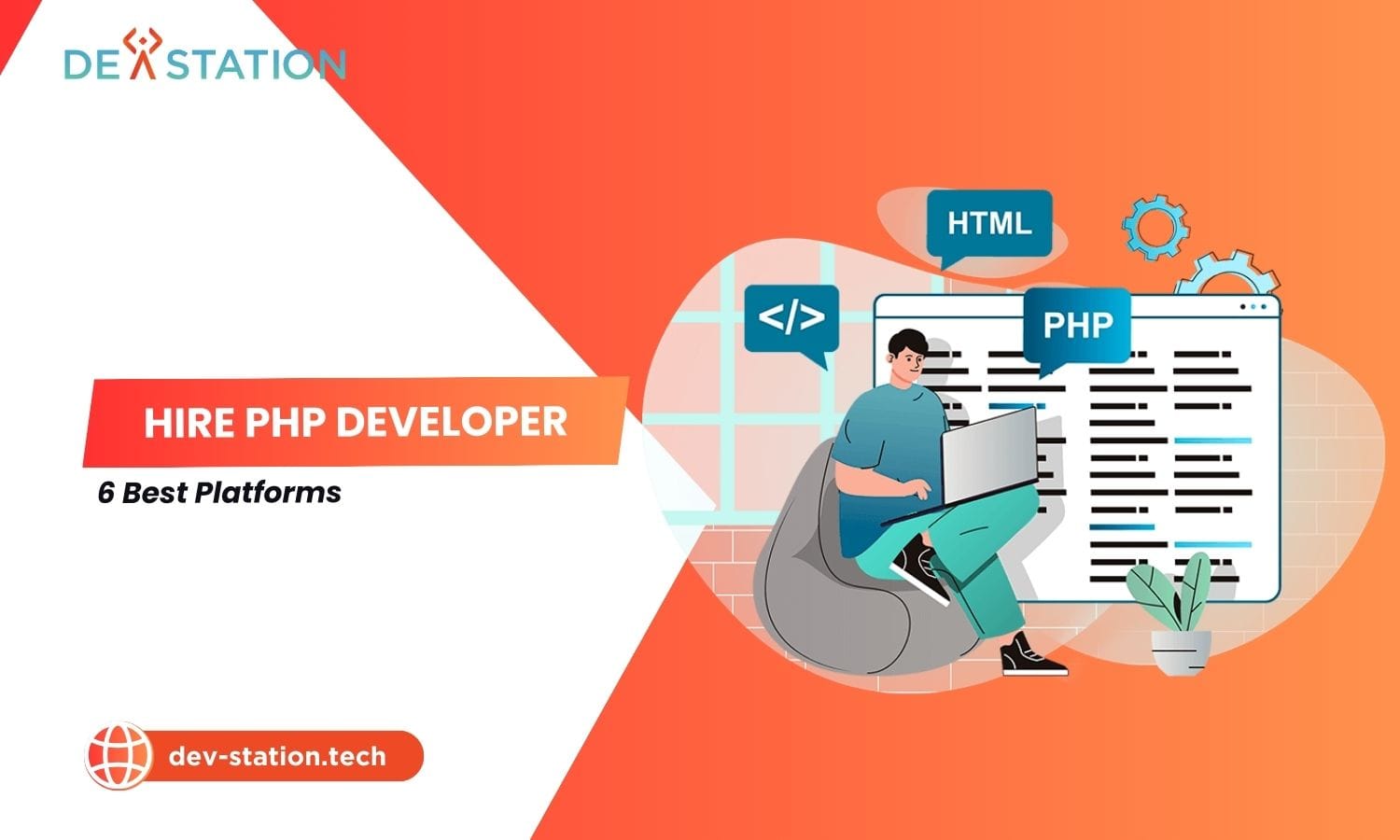Predictive Maintenance with IoT solutions offers a powerful way to anticipate equipment failures, drastically cutting operational disruptions for your business at dev-station.tech. This proactive approach transforms your machine monitoring strategy, moving beyond reactive repairs to intelligent, data-driven insights for enhanced asset performance and predictive analytics.
Contents
ToggleHow Can Predictive Maintenance With IoT Reduce Downtime By 40%?
Predictive Maintenance (PdM) powered by the Internet of Things (IoT) can reduce industrial downtime by up to 40% by using sensor data and machine learning to forecast equipment failures before they occur. This allows for scheduled, efficient repairs instead of costly, unplanned shutdowns.
The 40% reduction in downtime is not an arbitrary figure; it is the result of a fundamental shift from a reactive or preventive operational model to a predictive one. Consider a typical manufacturing plant operating 24/7. Unplanned downtime can cost upwards of $260,000 per hour, according to research by the Aberdeen Group. Let’s create a simplified calculation to understand the impact:
- Average Downtime Events: Assume a facility experiences 10 unplanned downtime events per year.
- Average Duration: Each event lasts an average of 4 hours.
- Total Annual Downtime: 10 events * 4 hours/event = 40 hours of downtime per year.
- Cost of Downtime: If the cost is $50,000 per hour, the total annual loss is 40 hours * $50,000/hour = $2,000,000.
By implementing an IoT-based predictive maintenance program, you gain the ability to foresee failures. A sensor might detect a subtle vibration anomaly or a 5°C temperature increase in a critical motor bearing. The system’s algorithm, trained on historical data, flags this as a 95% probability of failure within the next 150 operating hours. This allows maintenance to be scheduled during a planned shift change, turning a 4-hour unplanned shutdown into a 1-hour planned repair. Applying a 40% reduction in downtime would save this facility 16 hours of downtime annually, resulting in a direct cost saving of 16 hours * $50,000/hour = $800,000 per year.
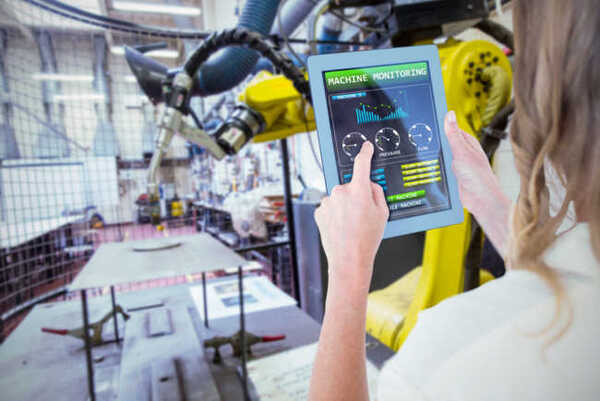
What Exactly Is Predictive Maintenance?
Predictive Maintenance is a proactive strategy that uses data analysis tools and techniques to detect anomalies in operation and possible defects in processes and equipment to fix them before they result in failure.
To truly appreciate the value of predictive maintenance, it is helpful to compare it with other common maintenance strategies. Each approach has a different philosophy regarding timing and triggers for maintenance activities.
How Does It Differ From Reactive Maintenance?
Reactive maintenance, also known as breakdown maintenance, involves fixing equipment only after it has failed. It is the most disruptive and costly approach.
This run-to-failure method requires no upfront investment in monitoring but leads to maximum unplanned downtime, potential secondary damage to equipment, and urgent, often expensive, repair work. It is suitable only for non-critical, easily replaceable assets.
How Does It Compare To Preventive Maintenance?
Preventive maintenance involves performing scheduled maintenance at regular intervals based on time or usage, regardless of the asset’s actual condition.
While this approach reduces the likelihood of failure compared to a reactive model, it has significant inefficiencies. According to studies, up to 30% of preventive maintenance is performed too early, leading to wasted resources and unnecessary downtime. Conversely, a fixed schedule may not be frequent enough to catch a component that is degrading faster than expected. Predictive maintenance optimizes this by triggering maintenance based on the actual, real-time condition of the asset.
How Does IoT Technology Power Predictive Maintenance?
IoT enables predictive maintenance by creating a network of sensors that collect real-time data from equipment, which is then analyzed by AI and machine learning models to identify patterns that precede failures.
The Internet of Things serves as the central nervous system for a modern PdM strategy. It connects the physical world of your machinery to the digital world of data analytics. At Dev Station Technology, we see this ecosystem as having three critical layers.
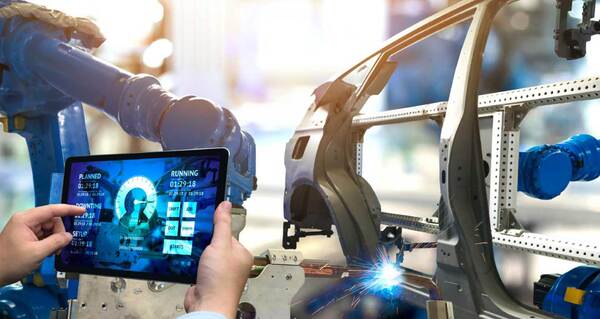
What Role Do IoT Sensors Play?
IoT sensors are the data-gathering devices attached to machinery to measure key physical parameters. They are the eyes and ears of your predictive maintenance system.
These low-cost, wireless sensors continuously collect data that indicates the health of an asset. The choice of sensor depends on the failure modes you want to predict.
| Sensor Type | Data Collected | Failure Mode Predicted |
|---|---|---|
| Vibration Sensors (Accelerometers) | Vibration frequency, amplitude | Bearing wear, misalignment, imbalance |
| Thermal Sensors (Infrared) | Surface temperature | Overheating, friction, electrical faults |
| Acoustic Sensors | Sound patterns, frequency | Gas leaks, structural stress |
| Current/Voltage Sensors | Electrical consumption | Motor strain, electrical degradation |
How Are AI and Machine Learning Used?
AI and machine learning algorithms analyze the vast streams of IoT sensor data to identify subtle patterns and correlations that are invisible to human analysis, allowing them to predict failures with high accuracy.
Once the data is collected, it is processed through sophisticated models. The machine learning in manufacturing models are trained on historical data, which includes both normal operating conditions and data from past failure events. This training allows the model to learn the unique signature of an impending breakdown. For example, it might learn that a specific 2 Hz vibration frequency combined with a 3°C temperature rise indicates a 90% chance of a bearing failure within a week. The insights from this analysis are crucial for effective iot in manufacturing, transforming raw data into actionable intelligence.
What Are the Key Benefits and KPIs of Predictive Maintenance?
The primary benefits include reduced downtime, lower maintenance costs, improved equipment lifespan, and enhanced worker safety. Key Performance Indicators (KPIs) are used to measure this success.
Implementing a PdM strategy delivers tangible returns across the organization. Beyond the headline metric of downtime reduction, companies experience improvements in several other areas.
- Reduced Maintenance Costs: Studies from Deloitte show that predictive maintenance can reduce overall maintenance costs by 25-30%. This is achieved by eliminating unnecessary preventive maintenance and reducing the need for expensive, expedited repairs.
- Increased Asset Lifespan: By addressing issues before they cause catastrophic failures, PdM can extend the operational life of machinery by 20-40%. Proactive care prevents the secondary damage that often occurs during a major breakdown. This is a core benefit of adopting industrial iot in manufacturing.
- Improved Safety: A safer working environment is a significant, though often overlooked, benefit. Predicting and preventing catastrophic equipment failures reduces the risk of accidents and injuries on the factory floor.
- Enhanced Production Quality: Failing equipment often operates sub-optimally before it breaks down completely, which can lead to a higher rate of product defects. The use of ai vision quality control manufacturing systems, powered by IoT data, ensures that production standards are consistently met.
What Is the Implementation Framework for an IoT Predictive Maintenance Solution?
A successful implementation follows a structured, four-step framework: Data Collection, Data Analysis & Model Training, Alerting & Visualization, and a Response Workflow.
Deploying a predictive maintenance solution is a strategic project that requires careful planning. At Dev Station Technology, we guide our clients through a clear, phased approach to ensure success.
Step 1: How Do You Collect and Transmit Data?
This stage involves identifying critical assets, selecting and installing the appropriate IoT sensors, and establishing a reliable network (like Wi-Fi, LoRaWAN, or Cellular) to transmit the sensor data to a central platform.
The first step is to identify the most critical pieces of equipment—those whose failure would cause the most significant disruption. You then equip these assets with sensors to capture relevant data points. This data is transmitted via gateways to a cloud or edge computing platform for analysis. The effective use of iot energy management manufacturing solutions often starts at this very stage, by monitoring power consumption as a key health indicator.
Step 2: How Is the Predictive Model Built and Trained?
Data scientists use the collected historical data to train machine learning models. The models learn to correlate specific data patterns with known failure events, creating a predictive algorithm.
In this phase, raw data is cleaned, processed, and used to train algorithms. For example, the model learns what the normal vibration signature of a healthy pump looks like. It then learns to recognize the anomalous signature that appeared in the days leading up to a past pump failure. This process can be further enhanced by creating a digital twin in manufacturing, a virtual model of the physical asset that helps simulate and predict outcomes with even greater accuracy.
Step 3: How Are Alerts and Dashboards Used?
When the live data feed matches a failure pattern, the system generates an alert. This alert is displayed on a dashboard and sent to relevant personnel via email or SMS.
The output of the predictive model must be translated into actionable information. This is where real-time production monitoring iot dashboards come in. They provide a visual overview of asset health, display risk scores, and highlight any active alerts. An alert might say: ‘Pump P-102: 95% probability of bearing failure in 72-96 hours. Vibration RMS increased by 20%’.
Step 4: What Does the Response Workflow Involve?
This final step involves creating a standardized process for how the maintenance team responds to an alert, from creating a work order to performing the repair and closing the loop in the system.
Technology alone is not enough; a clear process is essential. When an alert is triggered, it should automatically generate a work order in your maintenance management system (CMMS). The work order should contain all the relevant data: the specific asset, the predicted failure mode, and the recommended action. This ensures a fast, efficient, and data-driven response.
What Are Some Real-World Case Studies and Tools?
Major industrial companies like Michelin and Siemens have achieved significant ROI with predictive maintenance. Popular platforms include solutions from AWS, Microsoft Azure, and specialized vendors like C3 AI.
The adoption of IoT for predictive maintenance is widespread across many industries, delivering proven results.
- Michelin: The tire manufacturer uses IoT sensors and predictive analytics to monitor tire pressure, temperature, and wear on commercial vehicle fleets. This service helps their customers avoid costly roadside breakdowns and optimize fuel efficiency, demonstrating a clear case of enhanced iot supply chain visibility manufacturing and logistics.
- Siemens: Siemens uses predictive maintenance for its high-speed trains. By collecting and analyzing data from thousands of sensors on the trains, they can predict component failures and schedule maintenance proactively, guaranteeing their customers over 99% operational availability.
- Thyssenkrupp: The elevator company connected its elevators to the cloud, using IoT and predictive analytics to monitor their health in real time. This has enabled them to reduce elevator downtime by up to 50% by dispatching technicians before a breakdown occurs.
Choosing the right tools is critical for success. While major cloud providers like AWS (Amazon Monitron) and Microsoft (Azure IoT) offer powerful platforms, many companies partner with specialists like Dev Station Technology to build custom solutions tailored to their specific equipment and operational needs. These solutions integrate the best hardware, cloud services, and machine learning models into a seamless system.
Are You Ready to Transform Your Maintenance Strategy?
Moving from a reactive to a predictive maintenance model is one of the most impactful digital transformation initiatives a company can undertake. It is a journey that promises not just significant cost savings but also a more resilient, efficient, and safer operation. The technology is mature, the ROI is proven, and the competitive advantages are clear.
If you are ready to explore how predictive maintenance with IoT can reduce your downtime and revolutionize your operations, the team at Dev Station Technology is here to help. We specialize in designing and implementing custom IoT and machine learning solutions for industrial applications.
Learn more about our approach and see how we can help you build the factory of the future. Visit us at dev-station.tech or contact our team directly for a consultation at sale@dev-station.tech.

